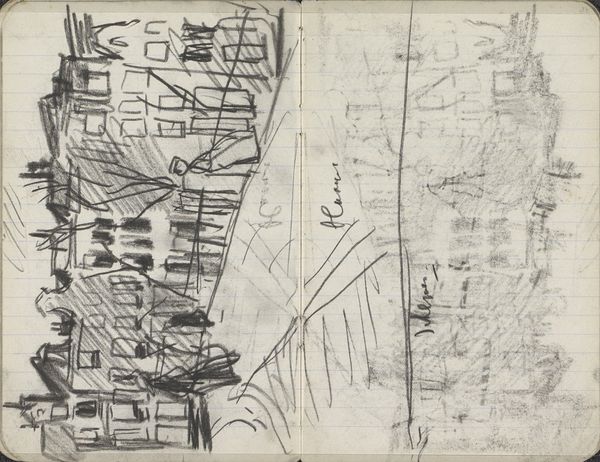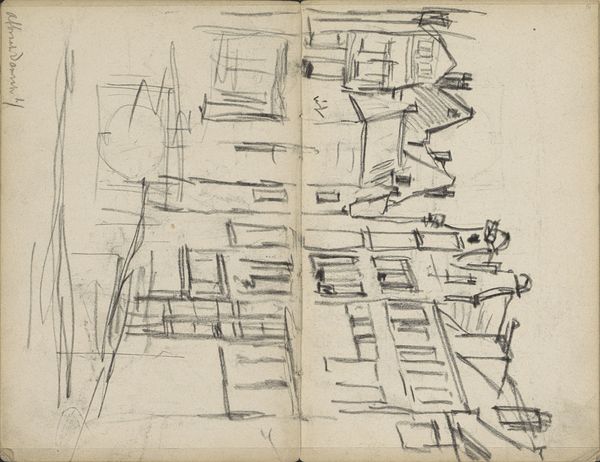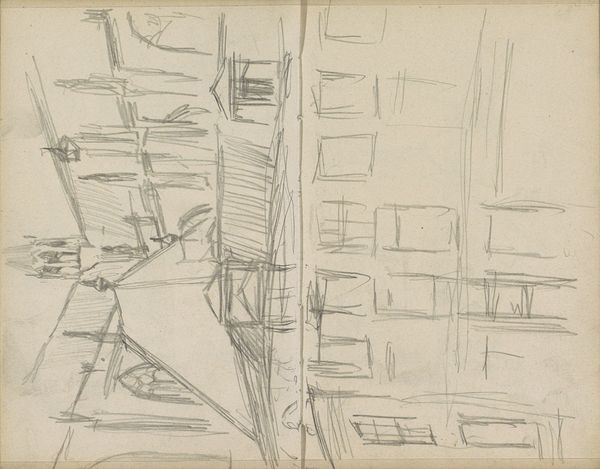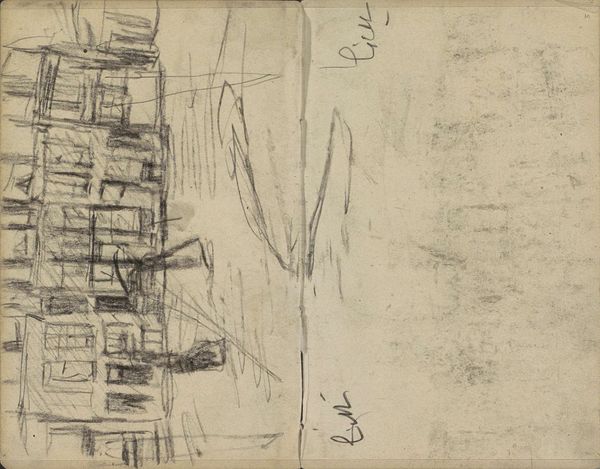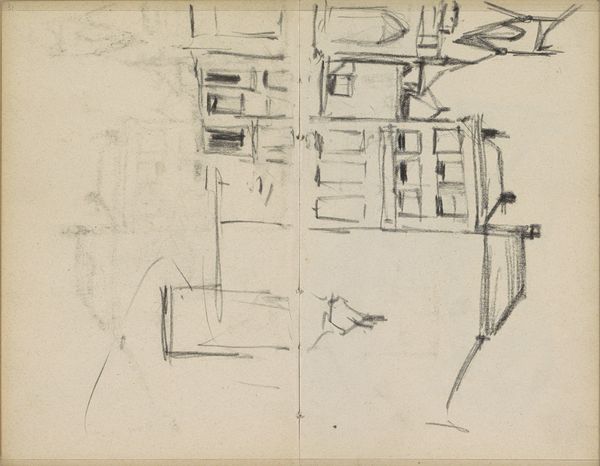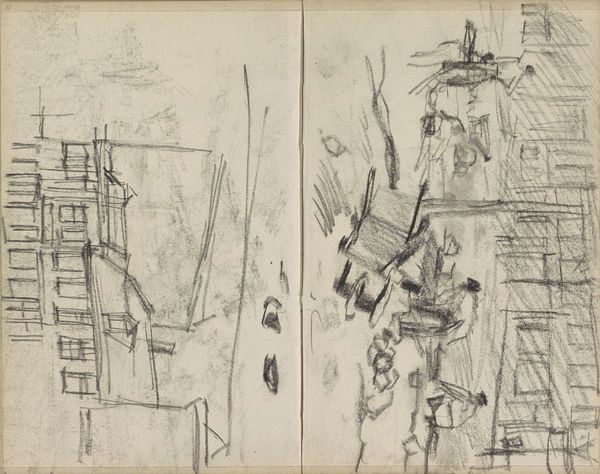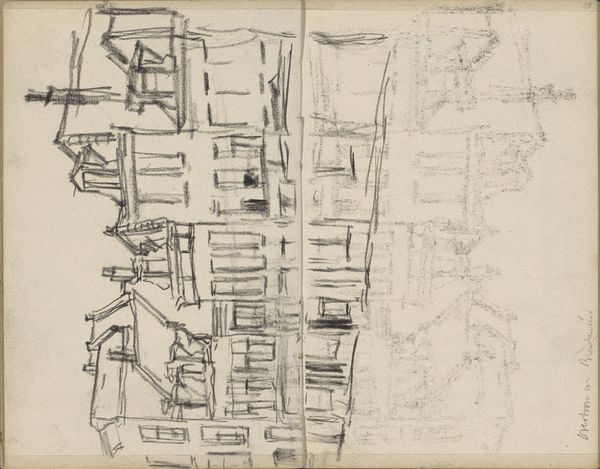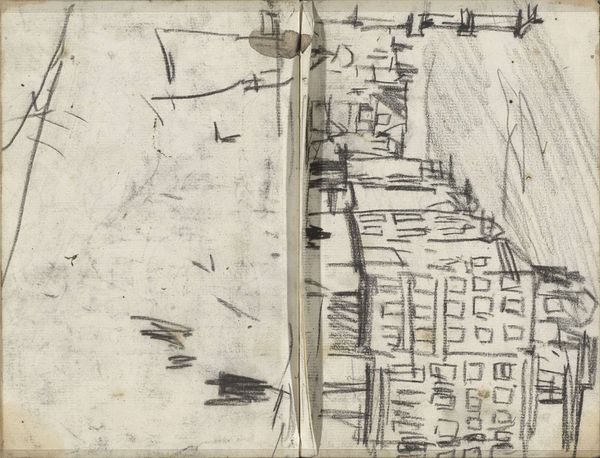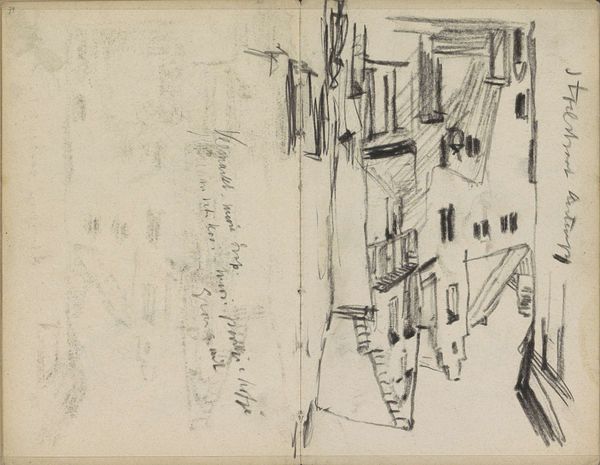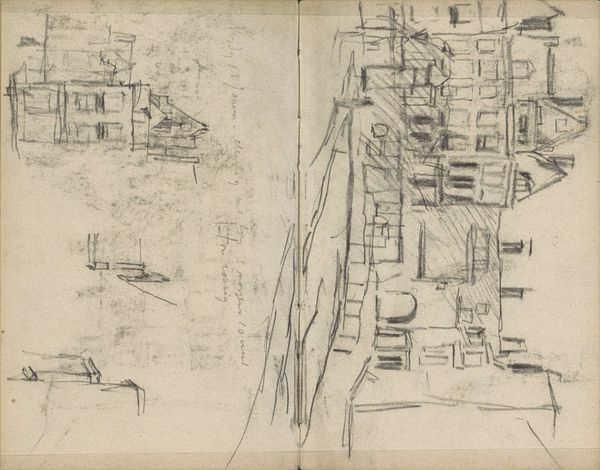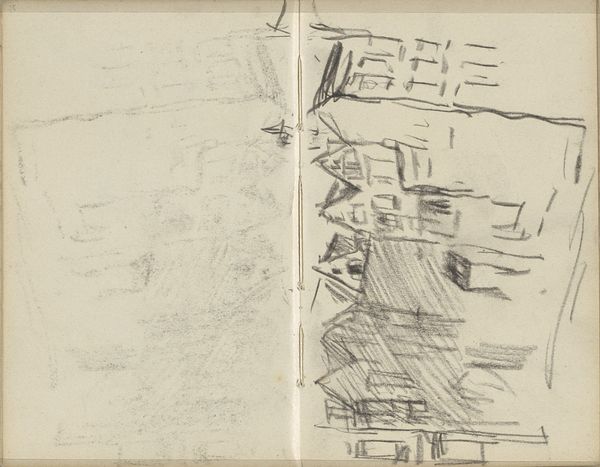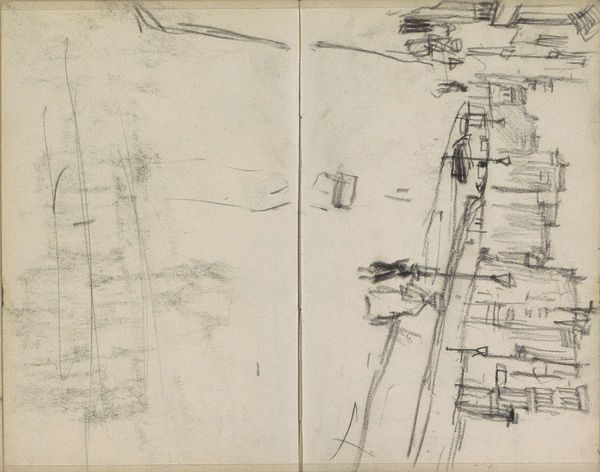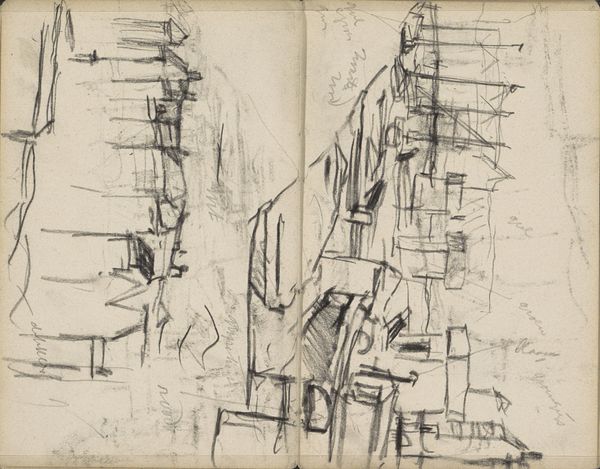
Gezicht in Amsterdam, mogelijk Prinseneiland of de Recht Boomssloot c. 1886 - 1903
0:00
0:00
Copyright: Rijks Museum: Open Domain
Curator: This spirited drawing is titled "Gezicht in Amsterdam, mogelijk Prinseneiland of de Recht Boomssloot," which translates to "View of Amsterdam, possibly Prinseneiland or the Recht Boomssloot." It's attributed to George Hendrik Breitner, and likely dates from between 1886 and 1903. Editor: My first impression is the rawness of the sketch. There's a definite sense of place, yet it feels unfinished, like a fleeting moment captured on paper. Curator: Precisely. Breitner employed a simple pencil on toned paper, favoring speed and efficiency. Look at the quick, assured lines forming the architectural details, the network of marks, creating a sense of depth and shadow. Editor: Given the context of Amsterdam at the time, Breitner's rapid sketches represent a radical shift in artistic practice, wouldn't you agree? He captures the daily lives of the working class amidst the rise of industrial capitalism. The urban landscape isn't simply scenery; it's a space molded by economic forces and inhabited by individuals impacted by these transformations. Curator: Absolutely, but don’t overlook the impact of technological advances on making his process possible. Pencil production industrialized considerably during the 19th Century, providing Breitner the tool to more readily and cheaply record what he witnessed in the urban sphere, and develop what was previously a mere artistic tool for academic and exploratory works into a mass medium and everyday drawing object. Editor: True. The very *process* of his sketching becomes a democratic act, almost a journalistic endeavor, reflecting the democratization of art production. Think about who these urban spaces were accessible to. The marginalized, working class individuals are depicted and humanized here, rendered in sketches to be as much of the human presence, lifeblood, and user of public infrastructures as anyone else. Curator: Interesting point. Though Breitner gained considerable social cache as a member of the Amsterdam Impressionist circle, the accessibility and portability of the humble pencil allowed him to record reality unadorned, without relying on elaborate materials or studio space, right? Editor: Exactly. Consider how this challenges traditional notions of art tied to wealth and patronage, where these streets, its inhabitants, are as deserving of an artist's rendering as any portrait of the wealthy elite of his day. Curator: And so, we come full circle, from technique and materials to the broader sociopolitical implications… it demonstrates the rich insights that this drawing reveals when you dig beneath the surface. Editor: Ultimately, this simple pencil sketch serves as an enduring document of its time, opening dialogue on social inequity and accessibility within the context of rapidly industrializing cities.
Comments
No comments
Be the first to comment and join the conversation on the ultimate creative platform.
